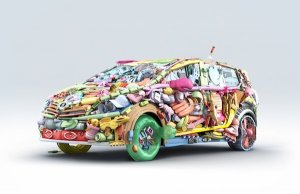The Evolution of Auto Creatives in Online marketing
The Evolution of Auto Creatives in Online marketing
Blog Article
In the fast-paced arena of digital marketing, the landscape is continually evolving, and one of the most notable advancements in recent years has been the rise of auto creatives. This phenomenon represents a significant shift in how brands approach the creation and optimization of advertising content. From static images to dynamic, personalized experiences, auto creatives and API leverage technology to supply highly targeted messages to audiences across various platforms. This informative article explores the evolution, benefits, challenges, and future trends of auto creatives in online marketing.
Evolution of Auto Creatives
Auto creatives emerged as a response to the growing demand for more personalized and relevant advertising. Traditionally, creating ad campaigns involved extensive manual work, from designing individual creatives to tailoring messages for several audience segments. This technique was not only time-consuming but in addition limited the dimensions and efficiency of campaigns.
The creation of machine learning and artificial intelligence (AI) technologies revolutionized this method. Auto creatives leverage algorithms to automate the creation, testing, and optimization of ad content. These algorithms analyze huge amounts of data in real-time to recognize the most effective combinations of elements such as images, copy, and calls-to-action (CTAs).
Initially, auto creatives dedicated to simple A/B testing of numerous variations. However, advancements in AI have enabled the creation of more sophisticated systems able to generating entirely new ad concepts depending on user behavior, preferences, and contextual factors.
Advantages of Auto Creatives
1 Efficiency: Auto creatives streamline the creative process, allowing marketers to create and deploy a large volume of ads quickly.
2 Personalization: By analyzing user data, auto creatives can deliver personalized content that resonates with specific audience segments, improving relevance and engagement.
3 Optimization: AI-powered algorithms continuously optimize ad performance by testing different variations and adjusting strategies in real-time depending on performance metrics.
4 Scalability: Marketers can scale campaigns effortlessly across different platforms and audience segments without significant manual intervention.
Challenges and Considerations
Despite their benefits, auto creatives also present several challenges:
1 Creative Control: Handing over creative decisions to algorithms raises concerns about maintaining brand consistency and messaging.
2 Data Privacy: Personalized advertising relies upon user data, raising ethical and regulatory considerations regarding data privacy and consent.
3 Complexity: Implementing and managing auto creative systems requires technical expertise and resources, which can be challenging for smaller organizations.
4 Algorithm Bias: AI algorithms may inadvertently perpetuate biases contained in training data, affecting the fairness and inclusivity of ad content.
Addressing these challenges requires a balanced approach that integrates AI capabilities with human oversight and adherence to ethical standards.
Future Trends
Looking ahead, several trends are shaping the future of auto creatives:
1 Hyper-Personalization: Advances in AI and machine learning will enable a lot more granular levels of personalization, delivering tailored ad experiences according to real-time data.
2 Interactive and Immersive Formats: Auto creatives will increasingly incorporate interactive elements for example augmented reality (AR) and virtual reality (VR) to create more engaging user experiences.
3 Cross-Channel Integration: Marketers will leverage auto creatives to make cohesive ad experiences across multiple channels, ensuring consistency and maximizing reach.
4 AI-Driven Predictive Analytics: Predictive analytics can play a crucial role in forecasting ad performance and optimizing creative strategies before deployment.
To conclude, auto creatives represent a transformative innovation in internet marketing, empowering brands to deliver more relevant, engaging, and efficient advertising at scale. When they offer numerous benefits, their implementation requires careful consideration of ethical, technical, and regulatory factors to ensure responsible use and maximize their potential. As technology will continue to evolve, in addition the capabilities and impact of auto creatives, shaping the future of digital advertising in profound ways.